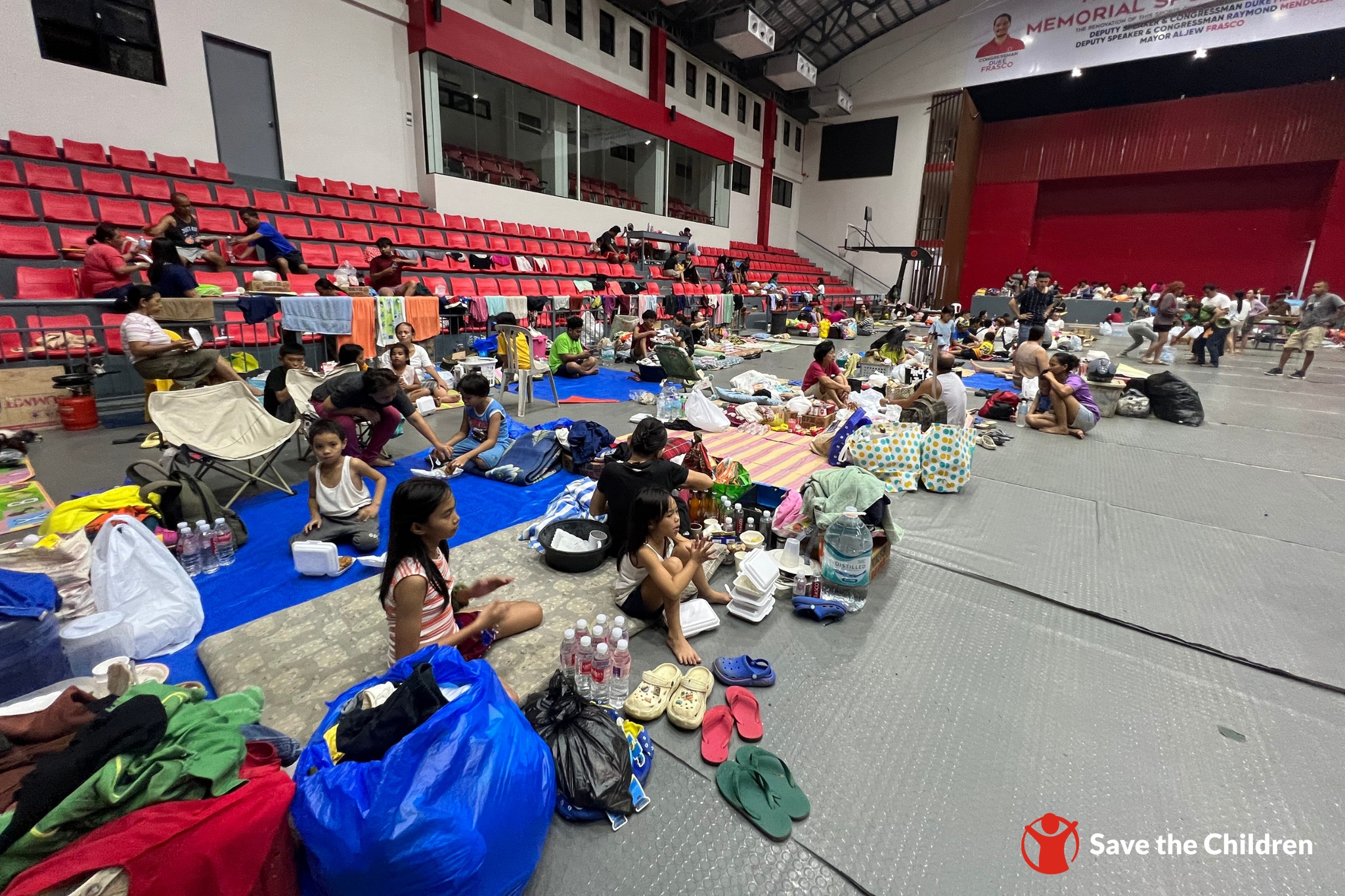Ensure the safety and protection of young children and their families during super typhoons and earthquakes in the Philippines and other countries
Advocacy : Clean, safe and sustainable environment
Above: Children at an evacuation center in Cebu, Philippines. Photo: Save the Children Philippines
Over one million people, including young children, have been displaced from their homes as Super Typhoon Fung-wong (local name: Uwan) devastates the central and eastern regions of the Philippines with unprecedented force. The super typhoon, characterised by winds reaching up to 185 kilometers per hour, has affected several provinces, particularly in Luzon with Catanduanes (Region V), Aurora (Region III), and Isabela (Region II) severely damaged.
The past few months have been exceptionally challenging for the Philippines, marked by a series of disasters such as typhoons and earthquakes. This is the 21st significant tropical cyclone to strike the Philippines in 2025, arriving barely a week after another powerful Typhoon Kalmaegi (local name: Tino) caused 232 fatalities in the Philippines and five in Vietnam.
In addition, in late September, a devastating 6.9 magnitude earthquake struck the Central Visayas region, resulting in the loss of over 60 lives and displacing thousands of families in Cebu and neighboring provinces.
Under such dire circumstances, young children require specialised attention due to their heightened vulnerability and diminished survival capabilities. Regrettably, young children are often overlooked in post-disaster needs assessments and are frequently marginalised within the ‘vulnerable population’ in terms of post-disaster rescue, recovery, and rehabilitation efforts.
As families are once again compelled to leave their homes and seek refuge in evacuation facilities, we extend our prayers for their safety and resilience as they confront the fear and destruction wrought by the storm. However, we also wish to draw attention to how these recurring and increasingly frequent disasters are subjecting families, particularly young children, to catastrophic financial losses and severe post-disaster trauma.
Young children are being repeatedly uprooted and displaced by storms that have grown larger and more destructive because of climate change. Warmer oceans now result in greater intensity of these storms, leading to the loss not only of lives and homes but also of the nurturing environments that every child requires to thrive. In the case of this super typhoon, for instance, 5,659 classrooms and 1,047 public schools in 12 regions are currently being used as evacuation centers, and according to the Department of Education, 24,715 schools are at imminent risk from floods and landslides.
This crisis deserves a serious moment of reflection, especially in our commitment to both safeguarding the most vulnerable young children and making them most valuable and resilient in the support of disaster-mitigation actions of governments and other stakeholders.
Amidst this unprecedented super typhoon’s impact on the Philippines, global leaders convene in Belém, Brazil, for the COP30 UN Climate Conference. ARNEC urges them to acknowledge the universal intensification of climate-related events and the plight of young children and families currently grappling with the storm’s onslaught. We fervently hope that their decisions will ensure a cleaner, safer, and more resilient future for generations to come, particularly for young children.
If you wish to support, you can donate through ARNEC’s partner, Save the Children Philippines, using this link: https://donate.savethechildren.org.ph/
Your generous donation will enable the provision of essential food supplies, hygiene items, and family kits to those affected by the disaster.
